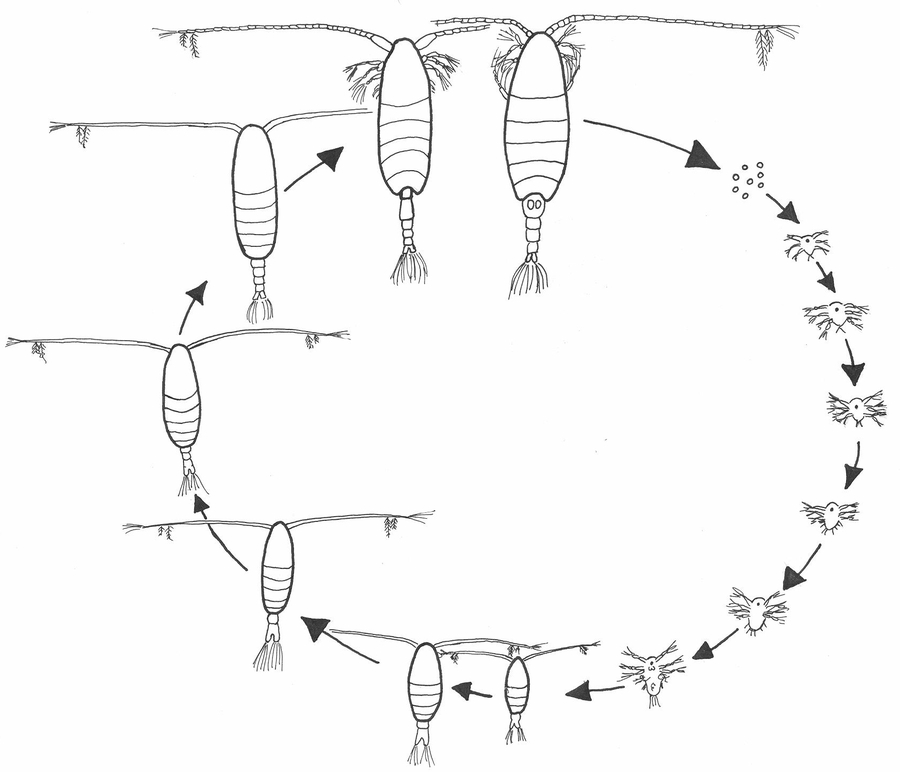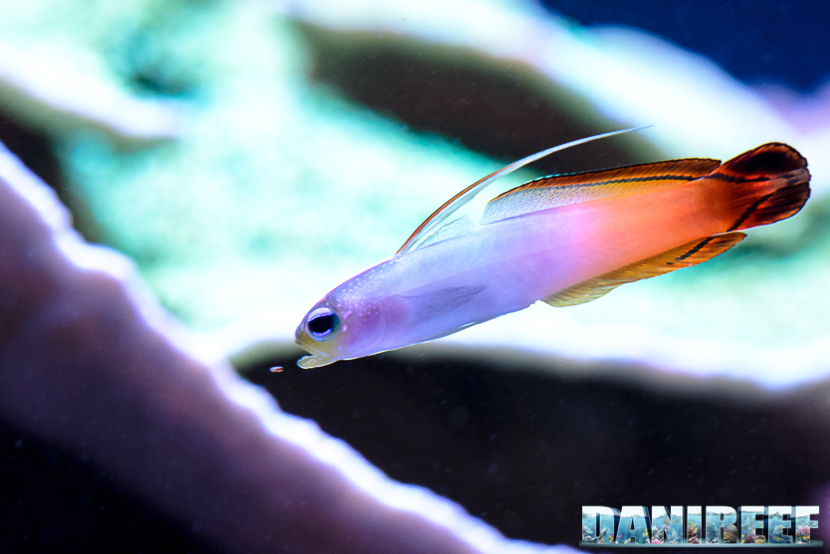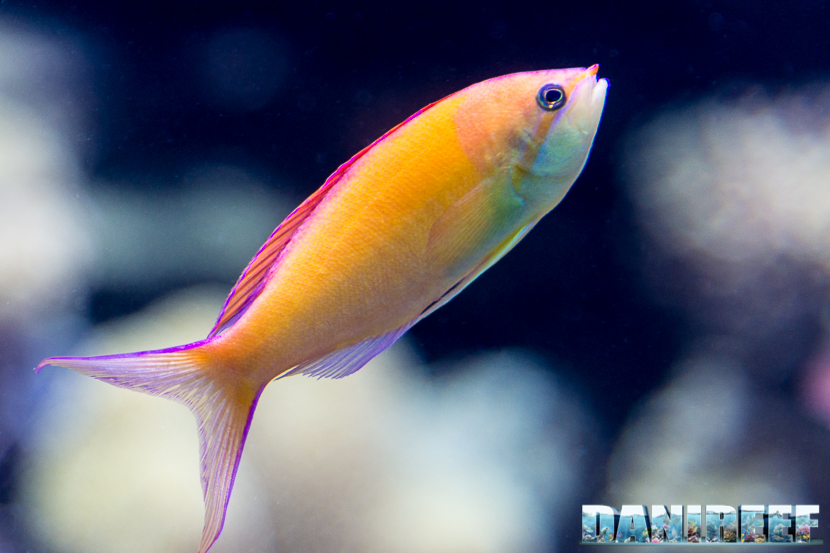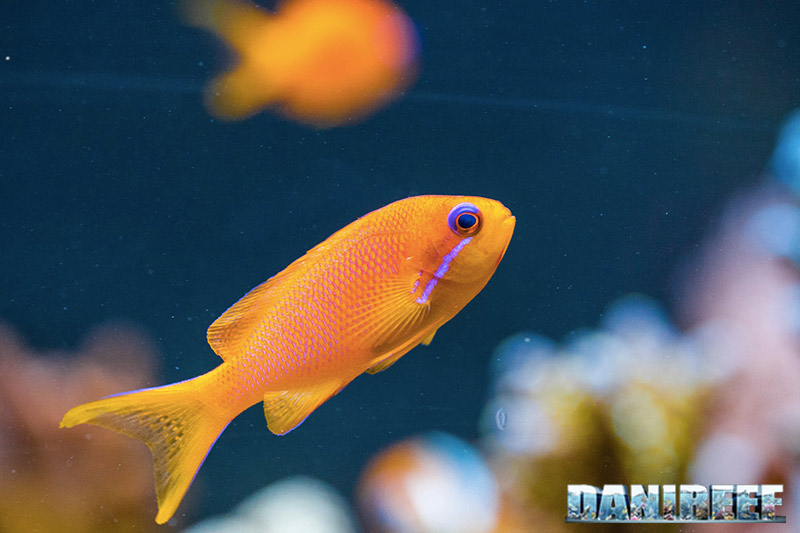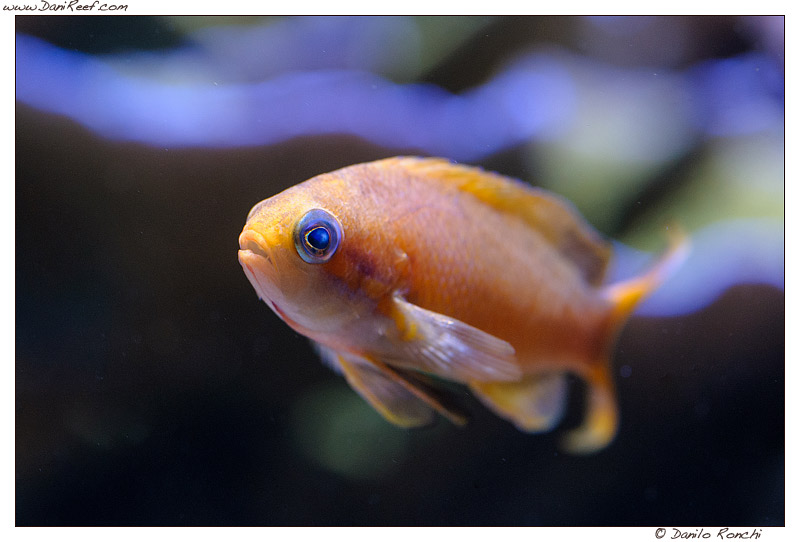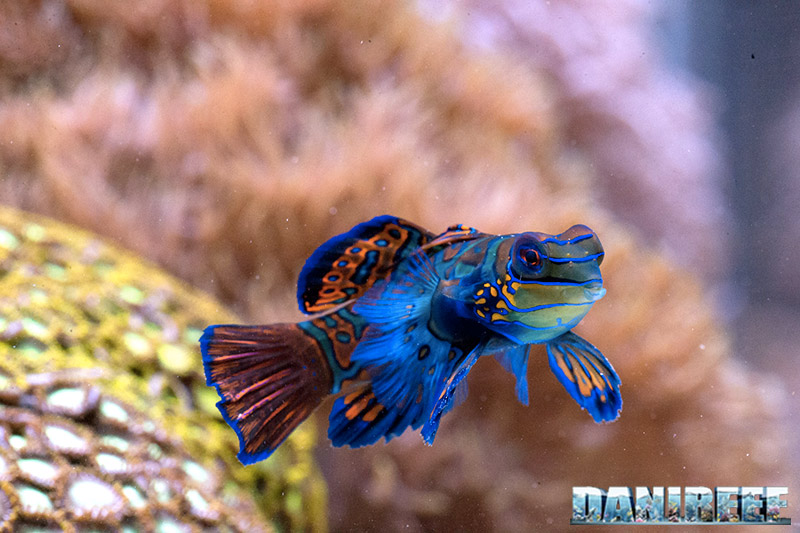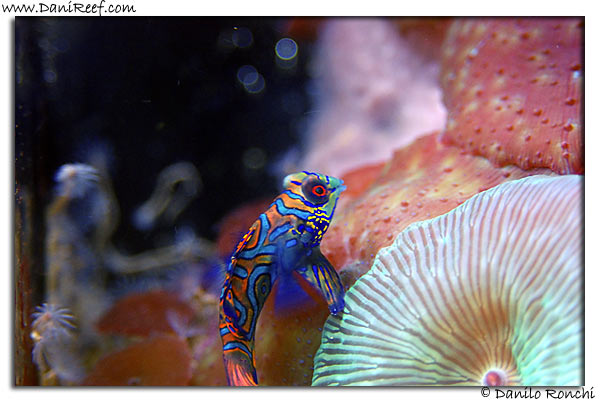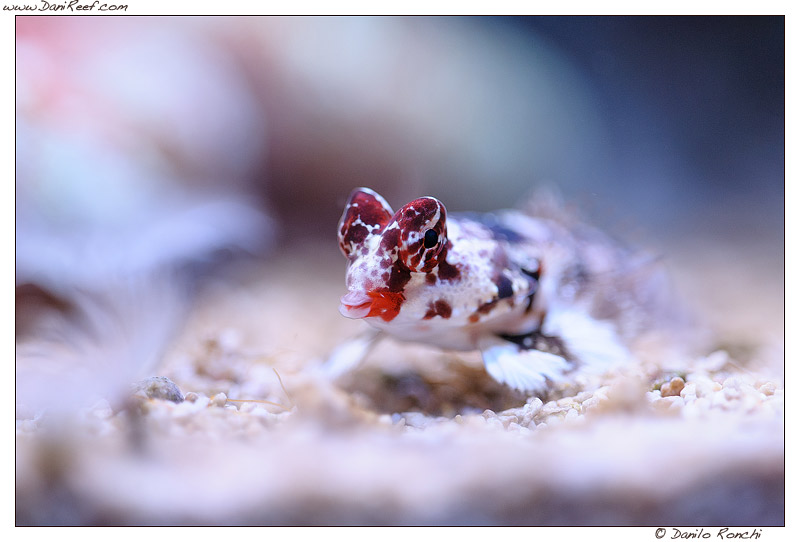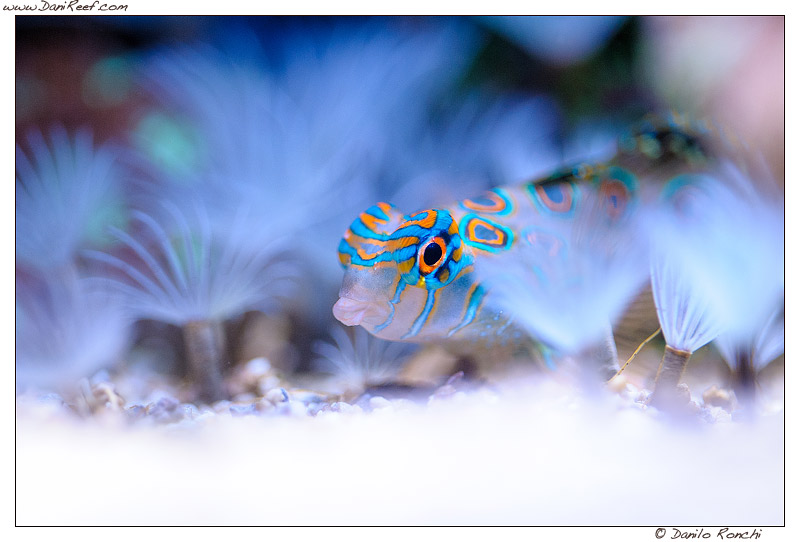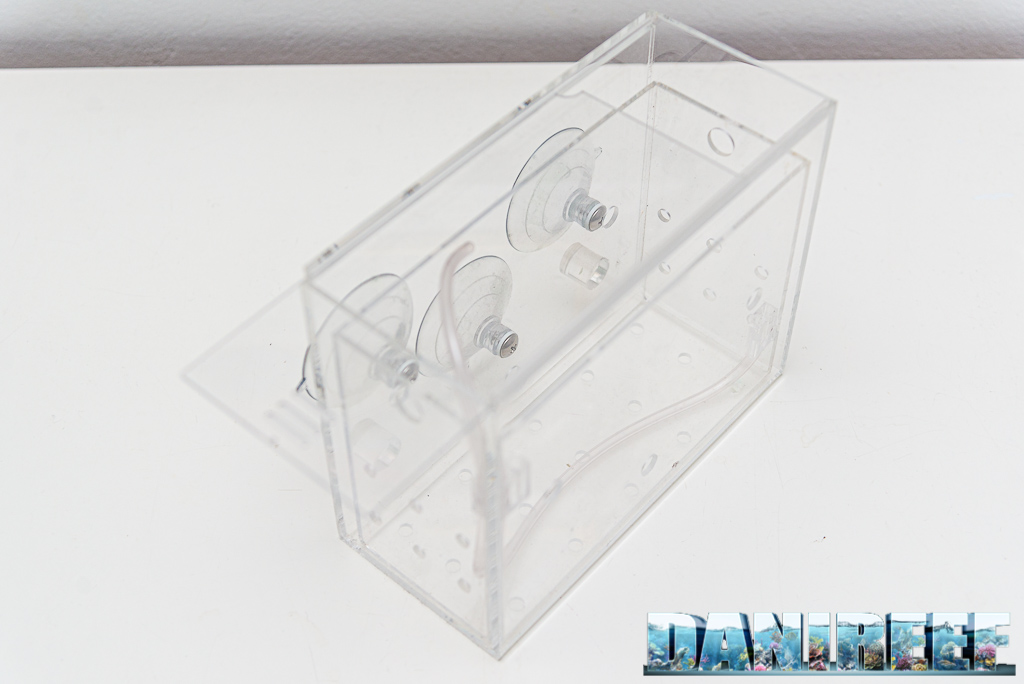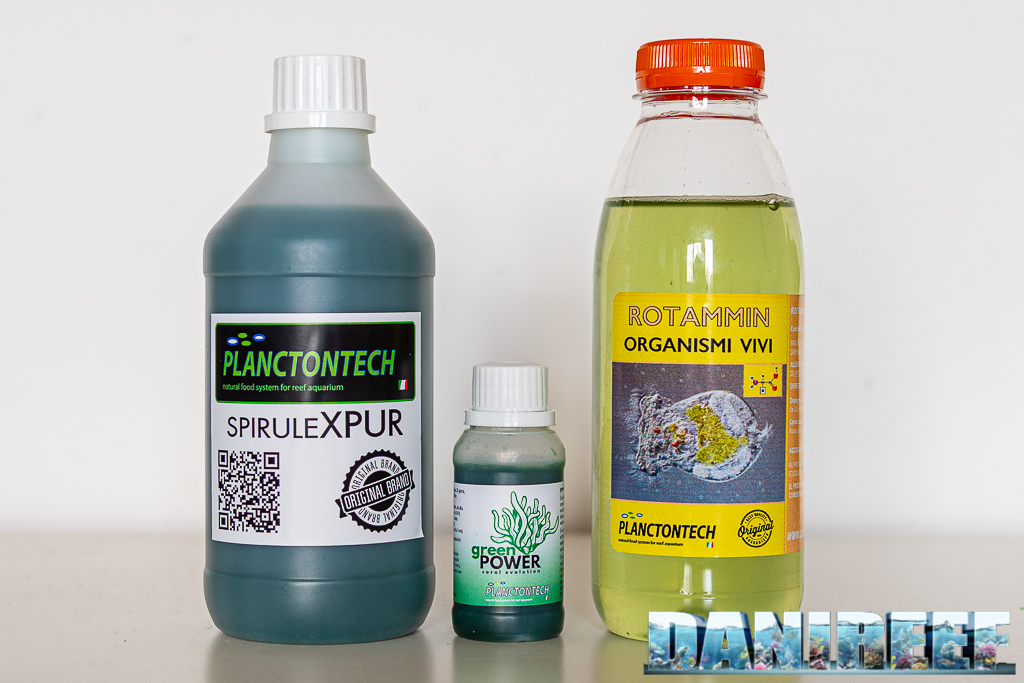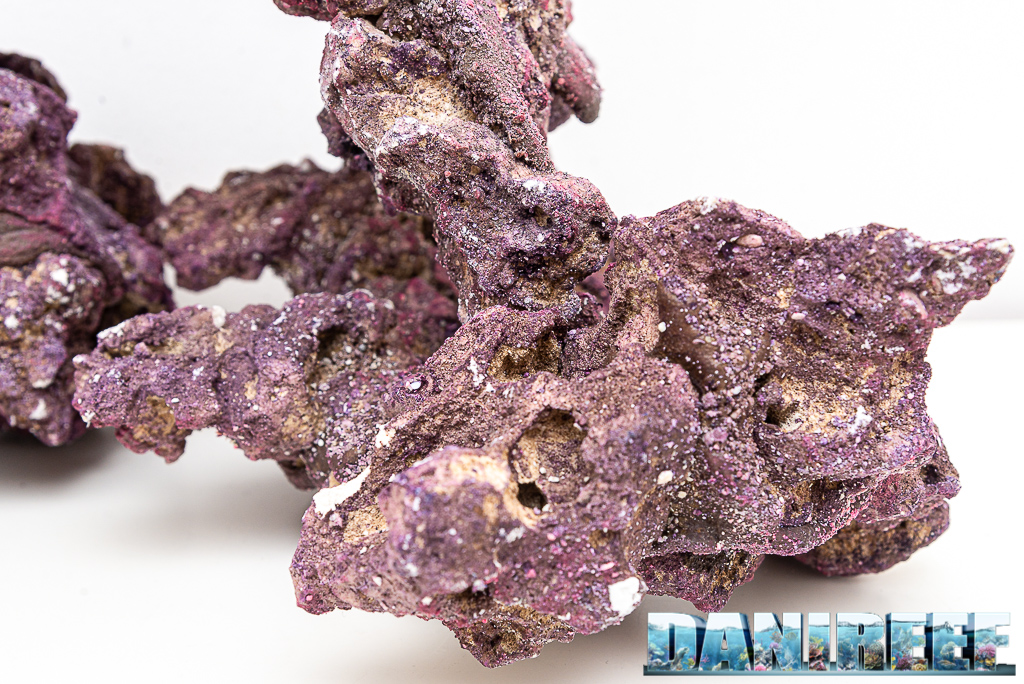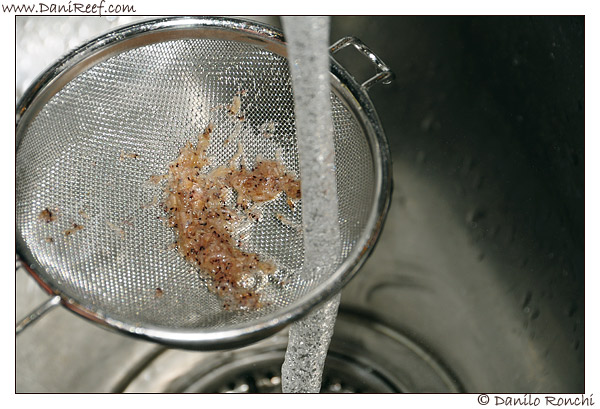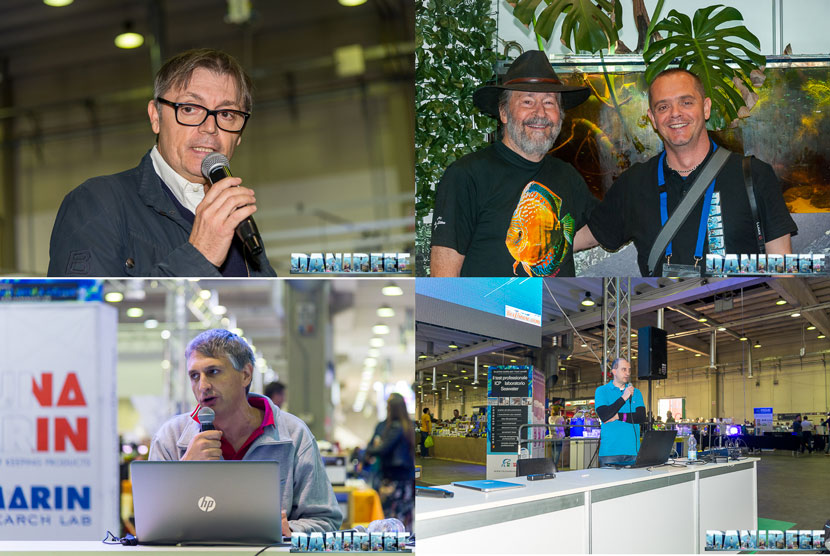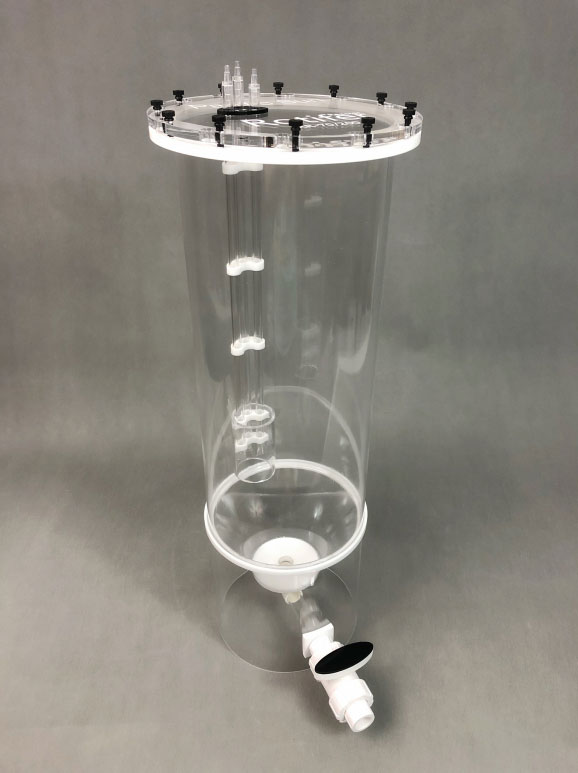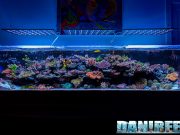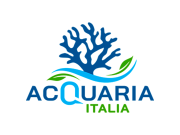The copepods
The copepods are divided depending on their lifestyle: we can simply consider two different kinds, the former related to the substrate and the latter free to move into the water column.
In aquarism have had more luck, even in commercial products, those with a life style based on the substrate, referable to the genus Tisbe spp., Tigriopus spp.. These copepods can reach or pass the millimeter, and some specimens even reach various centimeters. Differently from the rotifers, the copepods has distinct sexes easily recognizable with a magnifying glass because the female has two ovigerous sacks in her posterior region with the eggs. Another noticeable difference between rotifers and copepods is that the latters have a life cycle of 28-30 days, while the rotifers reach even three generations in 24 hours!
This life cycle implies the developing of the organism through following larval phases that will require different elements. Right after the hatch you should administer phytoplankton while for a still growing adult breeding is preferred very small industrial food, decorticated artemia cyst (without its chitin shell and dead embryo), yeasts and bacterial cultures.
The copepods, although not so big in size, move actively through jerk propulsion and pauses, which makes them to be easily preyed by fish and stolon or zoanthid SPS corals. Even if they can steer their direction if the environment has a low flow intensity, whenever they were in a more powerful flow, like the one created by a movement pump, they wouldn’t be able to oppose the current. They are in fact part of the plankton (learn more about in this article!).
The nutritional level of copepods, compared to other administered elements, is really satisfying and it reaches very high proteic values (>60%) which makes them a perfect substitute for industrial feeds, solid or liquid, dedicated to corals.
I could verify that the hunting of copepods by all the specimens whom I gave them, being them bold or shy, catch fish or fish for breeding, they couldn’t hold back. I administer this feed at least twice a week to all the fish, with more attention for specimens that requires a lot, like dartfish (Nemateleotris spp.), swallowtail seaperch (Anthias and similar) or mandarinfish (Synchiropus spp.).
You can start the culture using the water changed from the your aquarium, so to already have the temperature and the bacterial charge. You insert here the starter of the copepods species you prefer and add the phytoplankton (even a mix of species), if you want even yeasts and very thin industrial feed (for example expired food). The whole culture has to be maintained with a good movement, as well as for rotifers, while the lighting can be left out. Lately I suggest to place the container directly in sump, so that you don’t have to provide the heat and how to hide the plant.
The developing cycle, as I said, is quite long so it requires at least some months before you can regularly draw on and in quantities that sustain a medium sized and moderately populated.
The Harpacticoida copepods (the ones living near the substrate) available are few and, in truth, I couldn’t say about the peculiarities of the single species or which one is the best to breed. The most common species are surely the Tigriopus spp. the Tisbe spp. because they’re easy to find and breed.
The Calanoida copepods (the one living in the water column) are almost exclusively available at a professional level, and they require a great amount of water, like 100 liters for every culture. The main difference, visible to the naked eye, between Harpacticoida and Calanoida is the length of their first antennas: in the former they’re almost invisible, in the latter they can measure many micrometers.
Their placing in the water column and their very slow movement, and only vertically, make them easy prey for all the fish, but in particular they’re suitable for the Hippocampus (seahorse) and other similar animals.
[Written by Davide Mascazzini]
From the same series:
- The global seas nutrien cycle: a better understanding of its application in aquariums
- Plankton: zooplankton and phytoplankton – getting to know them
- Aquarium plankton: mistakes in the use of phytoplankton supplement
- Phytoplankton: algae species, cultures and results
- Zooplankton for feeding SPS, LPS and fish – rotifers and copepods





